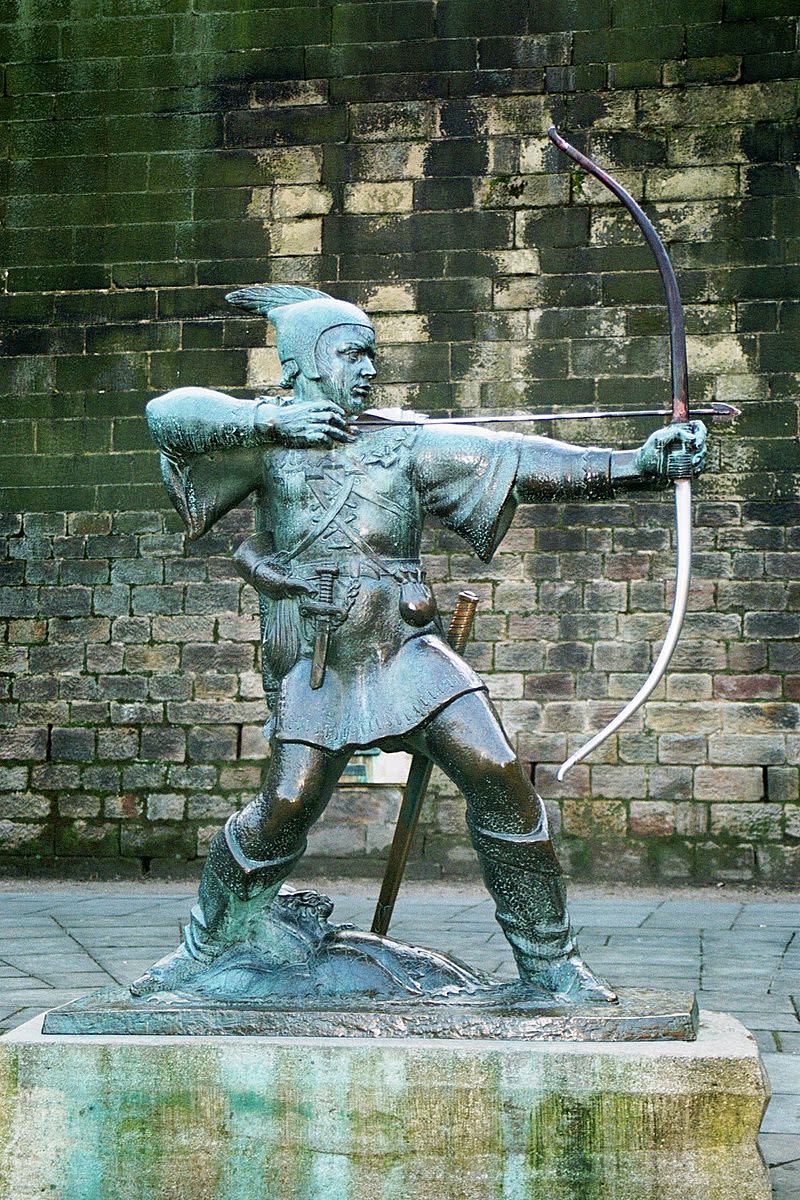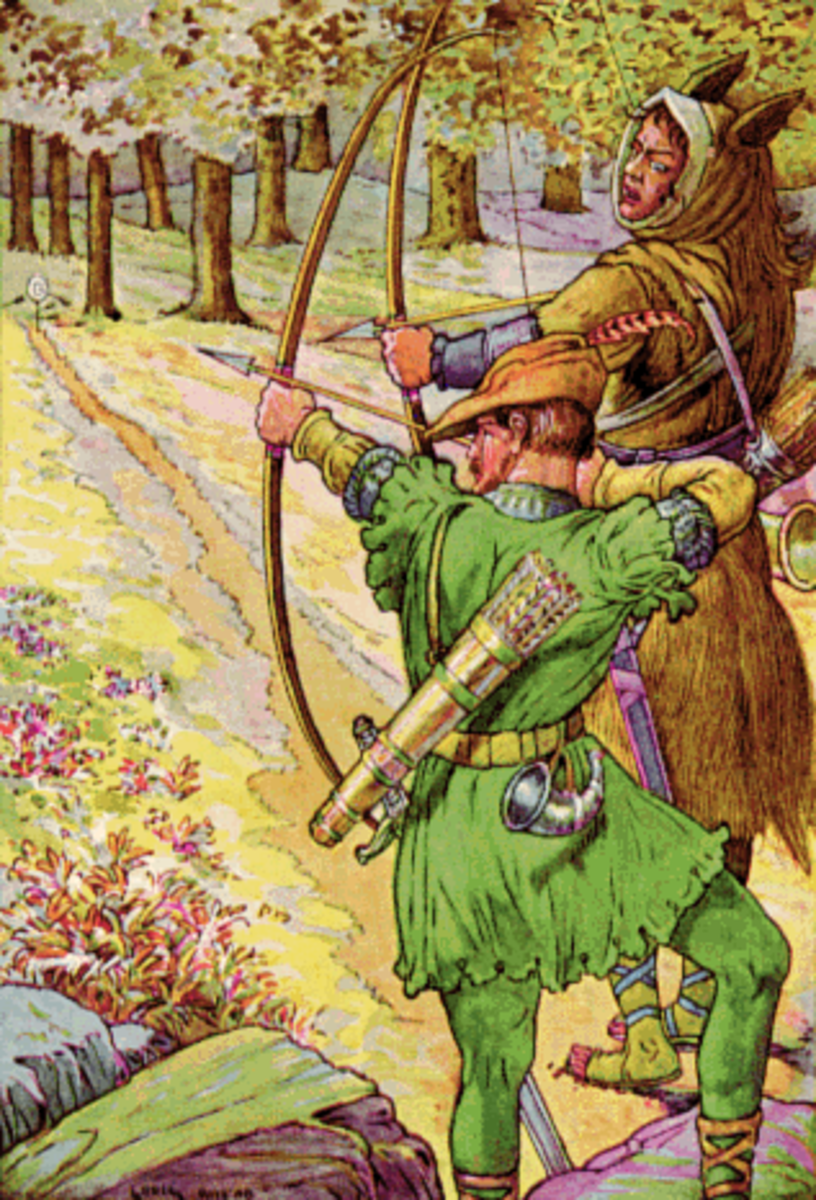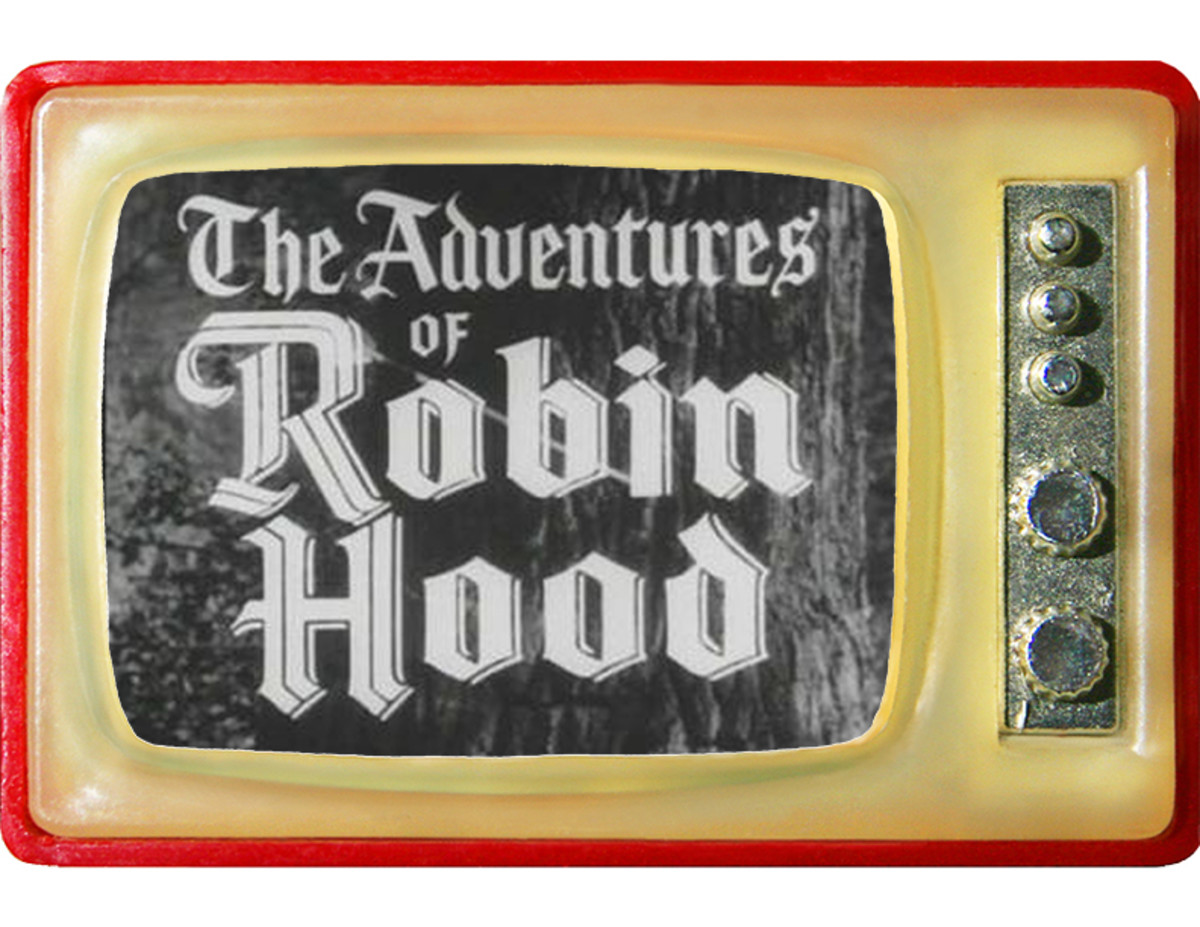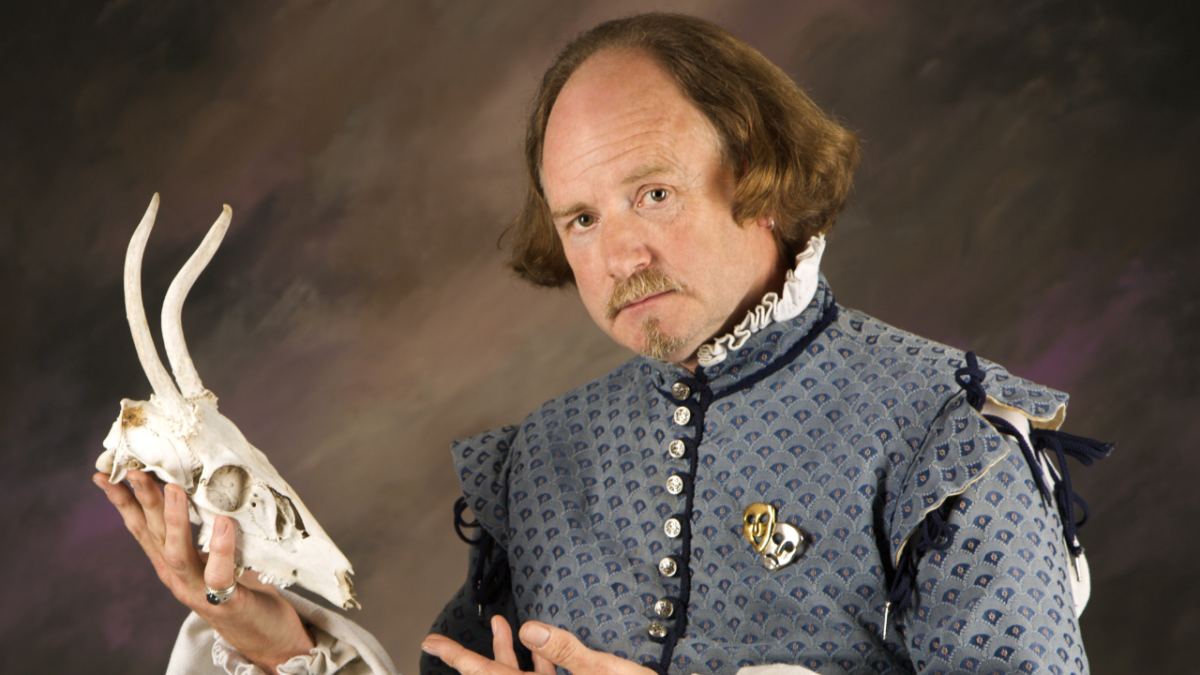The Legend of Robin Hood


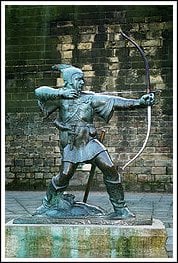
Stories of Robin have been told for over six hundred years. In Robin's time, few people could read or write therefore little was written down or recorded for history. Instead, people heard about Robin and his band of “Merry Men” through ballads of wandering minstrels or story tellers. Was Robin Hood historical fact or is a question that has intrigued millions for hundreds of years.
However, while the spirit of Robin Hood lives on, historical evidence is somewhat lacking…but there is evidence indicating he was a real person. For those who have never heard of Robin Hood, if there are any, Robin was famous for, robbing the rich to feed the poor and fighting against injustice and tyranny. rolls and faded manuscripts that feed the dedicated
Most of what we know about Robin Hood comes from the earliest ballads and tales written before 1550. Of these, the most well known are:
· A Gest of Robin Hood
· Robin Hood and the Monk
· Robin Hood and the Potter
· Robin Hood and Guy of Gisborne
· Robin Hood and the Curtal Friar
· Robin Hood's Death

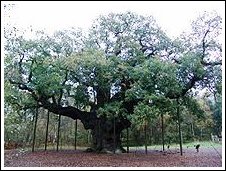
There are many reasons to believe Robin Hood could well have been a real historical figure. Researchers have uncovered evidence about the historical period of Nottingham, the place where most of his exploits took place.
The stories depict Robin as a fearless outlaw leading his band of "merry men" against the ruthless Prince John, the Sheriff of Nottingham and Sir Guy of Gisbourne. Robin lived a life of adventure and was well known for his skill with a long bow and swordsmanship.
Historians and researchers have varying views but generally believe Robin Hood was alive around the thirteenth century. The earliest reference to Robin Hood is in William Langland's poem "The vision of William concerning Piers Plowman" which was written in 1377. Other historical evidence places Robin anywhere between 1190 and 1307.

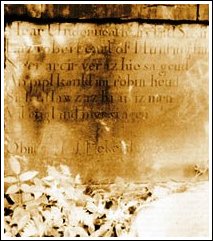
Robin Hood lived in Sherwood Forest which at the time covered about 100,000 acres and at the heart of their encampment was the famous Major Oak, the "council tree" of the outlaw band. It still stands today.
Sherwood Forest was home for the Kings deer which the outlaws hunted. In Robin's time the forest
was a dangerous place and people usually avoided it or travelled in large groups for protection
from ambush and robbery.
Robin Hood was born in approximately 1290. He was known for "robbing from the rich and giving to the poor, assisted by his band of “Merry Men.” Their trademark was Lincoln green clothing. The legends are said by some to have their roots in actual outlaws, or from ballads or tales of outlaws.
According to the earliest records Robin Hood was a commoner, but in more modern times portrayed as a wrongfully accused aristocrat whose lands were confiscated and made into an outlaw by a scheming sheriff. The tales often had political and cultural connotations, depicting Anglo-Saxons as heroes and the Normans, as evil tyrants.

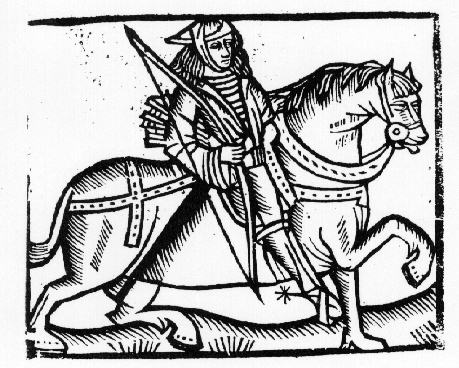
However, early references place Robin in the Barnsdale area of what is now South Yorkshire next to Nottinghamshire. Other records show a man named Robin Hood lived in Wakefield, Yorkshire in the 13th and 14th centuries. His grave has been claimed to be at Kirklees Priory in West Yorkshire with a headstone of questionable authenticity.
In later tales, Robin Hood is typically portrayed as a supporter of the late 12th-century king Richard the Lionheart. Supposedly, Robin was driven to a life of crime during the tyrannical misrule of Richard's evil brother John while Richard was off fighting the Third Crusade. This version first appeared around the 16th century however, there is little evidence to lend it credence and no mention of it is found in the earliest ballads. Another early version, “A Gest of Robin Hode,” names the king as "Edward," and while it does show Robin Hood as accepting the King's pardon he later repudiates it and returns to the greenwood.
The early ballads are also quite clear on Robin Hood's social status as a commoner. From the 16th century on there were attempts to promote Robin Hood to the ranks of nobility and in two popular plays at the very end of the 16th century he is presented as the Earl of Huntingdon, which title he still holds to this day.
As well as ballads, the legend was also promulgated by "Robin Hood games" or plays of the late medieval and early modern May Day festivities. The first documented Robin Hood game was in 1426 but it does not indicate how old or widespread the custom was at the time. The Robin Hood games are known to have been popular in the later 15th and 16th centuries. It is commonly believed the characters of Maid Marian and a jolly friar entered the legend through these games.
The early ballads tie Robin Hood to real places and many believe he was a real person. A number of theories as to who he was abound. Some say "Robin Hood,” "Robert Hood" or something similar was his real name. Others claim this may have been merely an alias disguising a medieval bandit.
Although, it is possible Robin Hood has always been a fictional character. It is difficult to say because the oldest references to Robin Hood are not historical records, or even ballads. Instead, they are hints and allusions found in various works. From 1228 onwards, the names 'Robinhood', 'Robehod' or 'Robbehod' occur in several court documents. The majority date from the late 13th century. Between 1261 and 1300, there are about eight references to 'Rabunhod' in various regions across England.
There are a number of theories attempting to identify a historical Robin Hood. The difficulty with this is "Robert" or “Robin” was a very common name. The surname "Hood" referring to the head-covering, was also fairly common. Therefore, there are a number of people called "Robert Hood" or "Robin Hood" to be found in medieval records.
According to legend, Robin journeyed to Kirklees Priory where he was eventually killed by his cousin the prioress and Sir Roger of Doncaster.
It is at Kirklees Priory the alleged grave of Robin Hood can still be seen.
Unfortunately, much of Kirklees Priory is now ruined but roughly 600 metres from the gatehouse a medieval gravestone was found bearing a partial inscription "here lies Robard Hude..."



